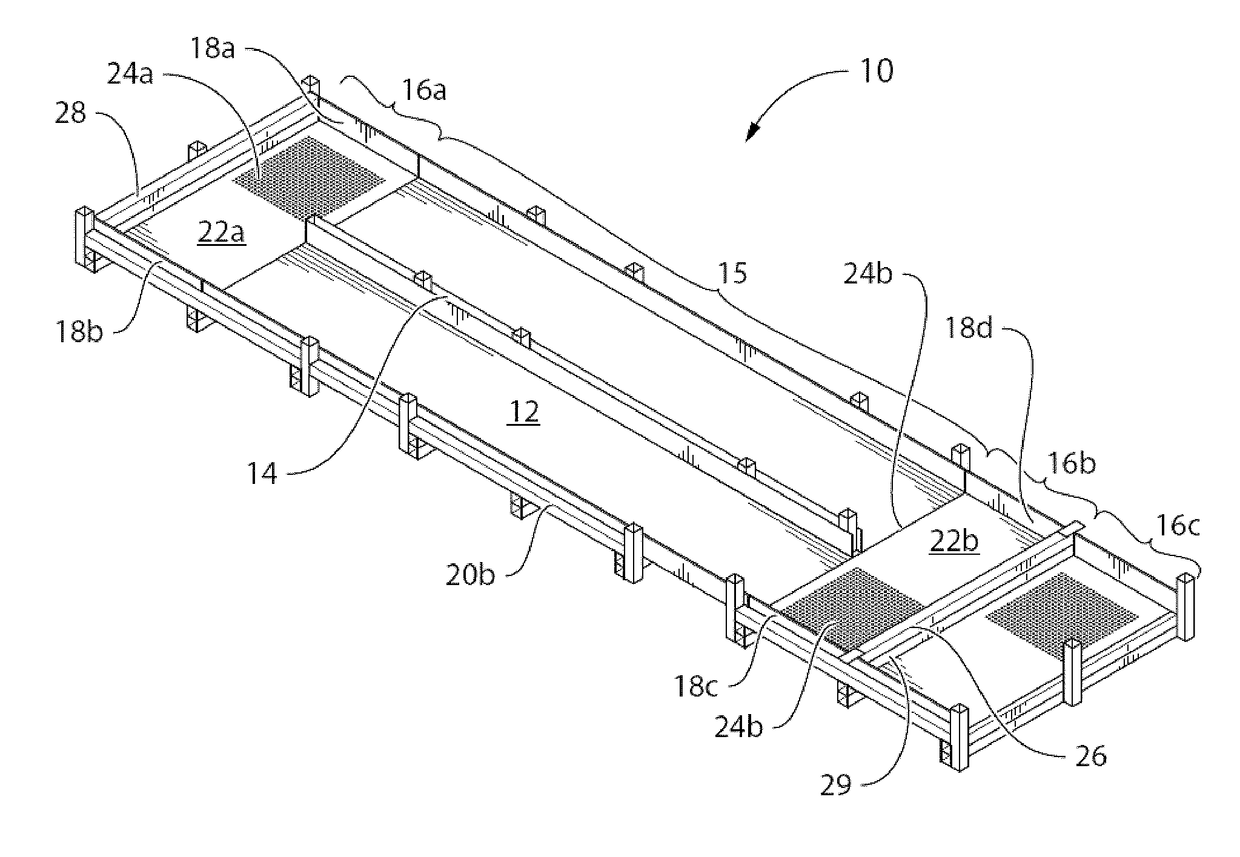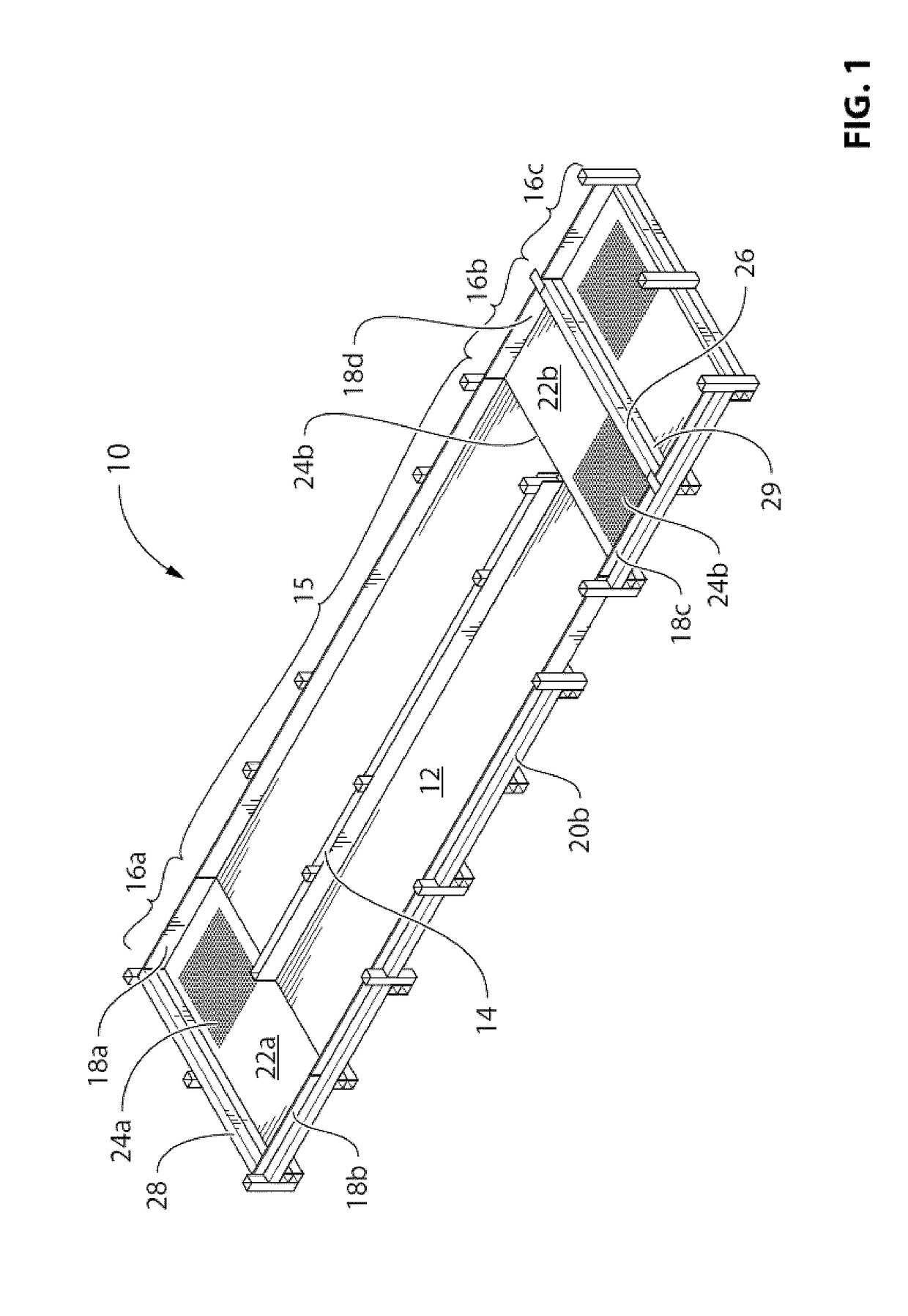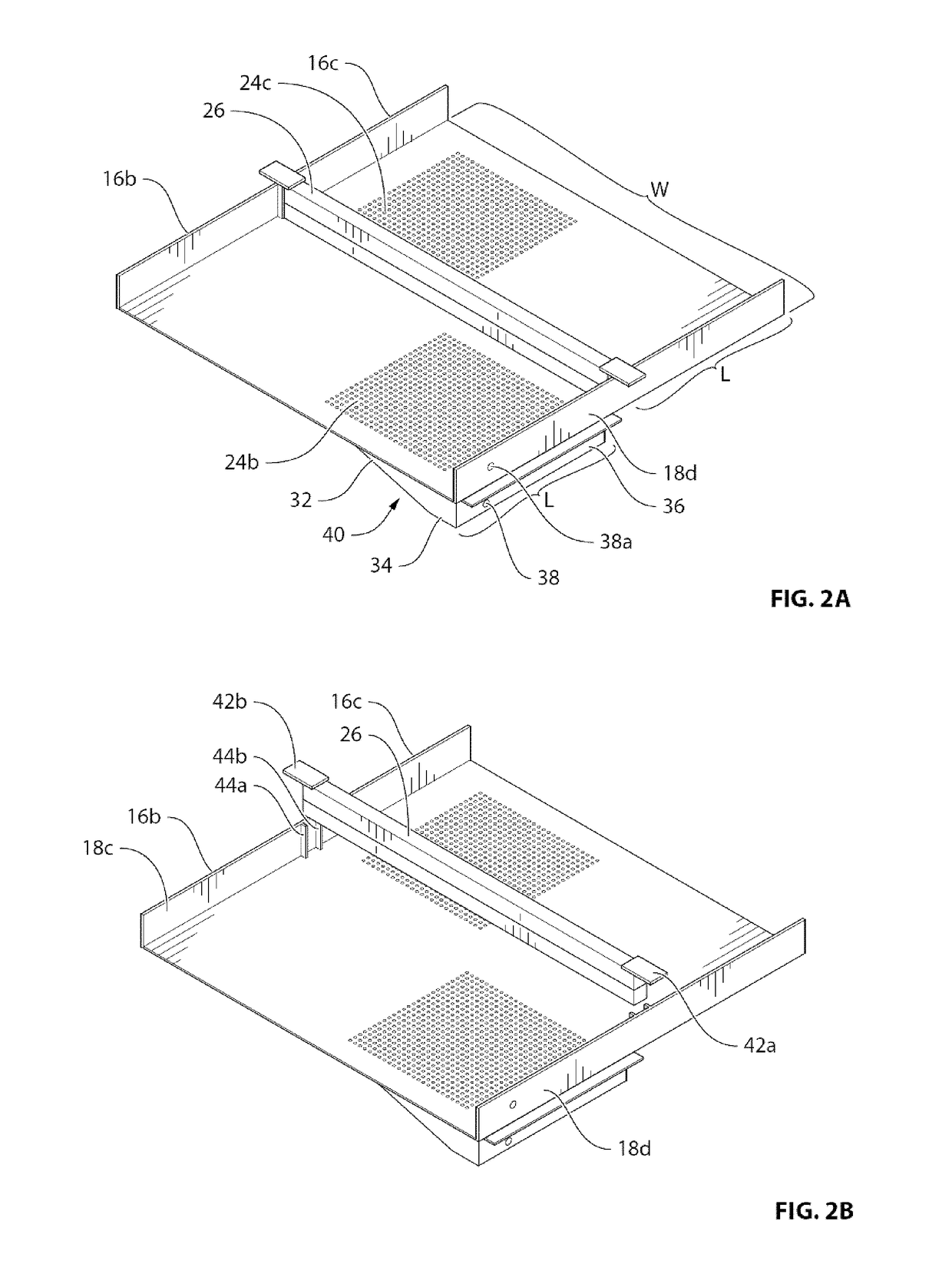Indoor shrimp aquaculture system and method
a technology for indoor shrimp and aquaculture, applied in pisciculture, aquaria, climate change adaptation, etc., can solve the problems of methods, while productive, not meeting demand, and challenges and drawbacks of methods,
- Summary
- Abstract
- Description
- Claims
- Application Information
AI Technical Summary
Benefits of technology
Problems solved by technology
Method used
Image
Examples
example 1
Exemplary Production Conditions
[0150]The system and method disclosed herein have been designed for maximum flexibility and production, and can allow for the ability to customize crops to meet any market demand. There are a number of variables that contribute to a production strategy including:[0151]Market demand for size and price[0152]Weekly weight gain[0153]Mortality (Survival) Rate[0154]Stocking Density[0155]Harvest density[0156]Partial Harvests[0157]Feed Conversion Ratio[0158]Production costs
[0159]Taking the variables listed above into consideration an overall growing strategy is determined or one or more raceways may be customized to accommodate differing growing strategies simultaneously providing maximum flexibility.
[0160]For example, anticipating a post-larval shrimp (PL) to be 1.5-2 g in size after 5 weeks; 7 g after 8 weeks and 15 g after 12 weeks, the growing strategy will determine the length of time the PLs remain in the nursery phase. Specifically, if the end goal is t...
example 2
Expected Energy Conservation Efficiencies
[0172]The system and method disclosed herein have been designed for scaleable shrimp production. In particular, the system is configured for maximal energy and water conservation in large scale production. The expected energy and water use efficiencies provided by the system of the present disclosure was assessed by simulating various parameters that are anticipated to be achievable by the system of the present disclosure.
[0173]Energy and water conservation efficiencies were simulated based on an exemplary model system consisting of eight tank stacks per production building, seven tank layers per tank stack, having 500 square meters of water surface area and 110 cubic meters of water volume per tank stack layer.
[0174]The expected evaporative water loss, evaporative heat loss, and other modes of heat loss were calculated as a function of the relative humidity (RH) maintained over the shrimp culture water based on the specifications of the exem...
PUM
 Login to View More
Login to View More Abstract
Description
Claims
Application Information
 Login to View More
Login to View More - R&D
- Intellectual Property
- Life Sciences
- Materials
- Tech Scout
- Unparalleled Data Quality
- Higher Quality Content
- 60% Fewer Hallucinations
Browse by: Latest US Patents, China's latest patents, Technical Efficacy Thesaurus, Application Domain, Technology Topic, Popular Technical Reports.
© 2025 PatSnap. All rights reserved.Legal|Privacy policy|Modern Slavery Act Transparency Statement|Sitemap|About US| Contact US: help@patsnap.com



